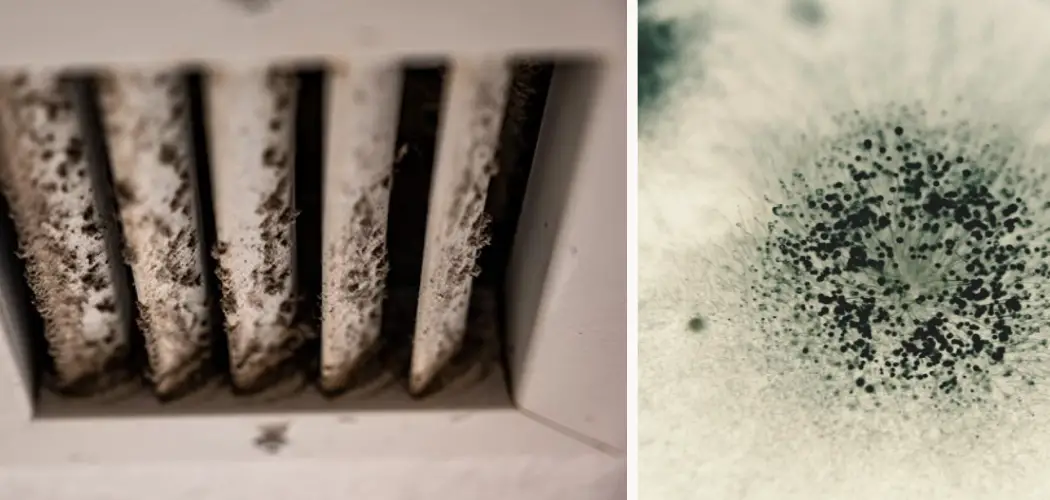Mold is an extremely common problem in homes and other buildings, and it can cause serious health problems. People who suffer from asthma or allergies are particularly susceptible to the effects of mold spores in the air. In addition to causing respiratory issues, mold can also damage furniture, clothing, carpets, walls and other household items.
There are several advantages to getting rid of mold from your air. The most important is that it will improve the indoor air quality, which helps reduce respiratory irritation and other health issues caused by mold spores. It also reduces the chances of further damage to furniture, clothing, carpets, walls and other household items due to long-term exposure to mold. In this blog post, You will learn in detail how to get mold out of air.
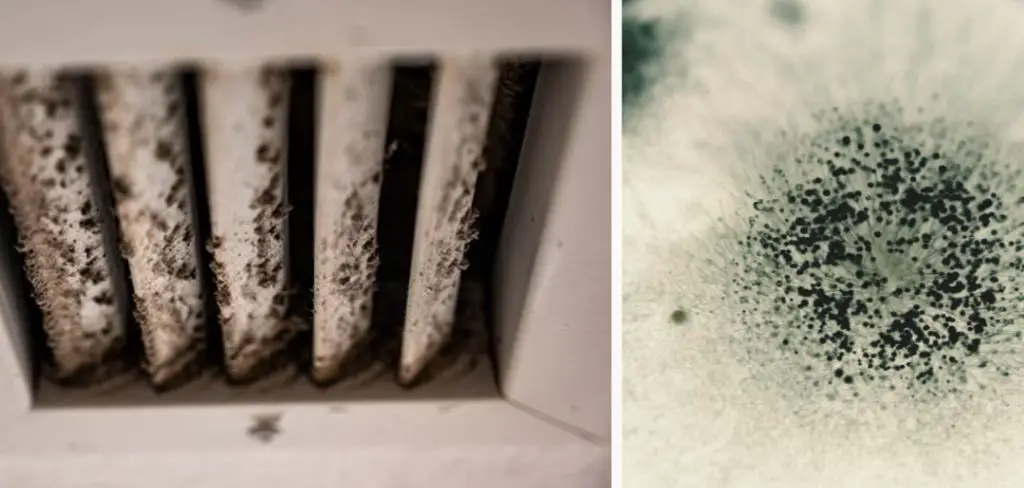
Step by Step Processes for How to Get Mold Out of Air
Step 1: Inspect Your Home
The first step in tackling a mold problem is to inspect your home for signs of moisture and mold. Look for water stains on walls, ceilings and floors that could indicate hidden mold growth. Also pay attention to musty odors which may be an indication of active mold growth.
Step 2: Remove Excess Moisture
Once you’ve identified the source of moisture, take steps to reduce and remove it. This could include repairing plumbing leaks, using a dehumidifier or installing a ventilation system. Clean all surfaces thoroughly with soap and water. Use an EPA-registered disinfectant on hard surfaces such as countertops and walls.
Step 3: Replace Insulation and Drywall
If you discover extensive mold growth, it may be necessary to replace insulation or drywall that has been affected. Make sure to dispose of the old materials properly. Make sure to clean air ducts and air filters often to remove mold spores. It’s also important to change air filters regularly.
Step 4: Allow Proper Ventilation
Open windows and doors whenever possible to allow fresh air into the home and keep humidity levels low. Using an air purifier with a HEPA filter can help to remove mold spores from the air. Make sure to clean or replace filters regularly.
Step 5: Use a Dehumidifier
If your home is prone to excessive moisture, you may want to consider using a dehumidifier to reduce humidity levels and prevent mold growth. In some cases, you may need to use chemical treatments such as boric acid or bleach to remove mold. Make sure to read the directions carefully and wear protective gear when using these products.
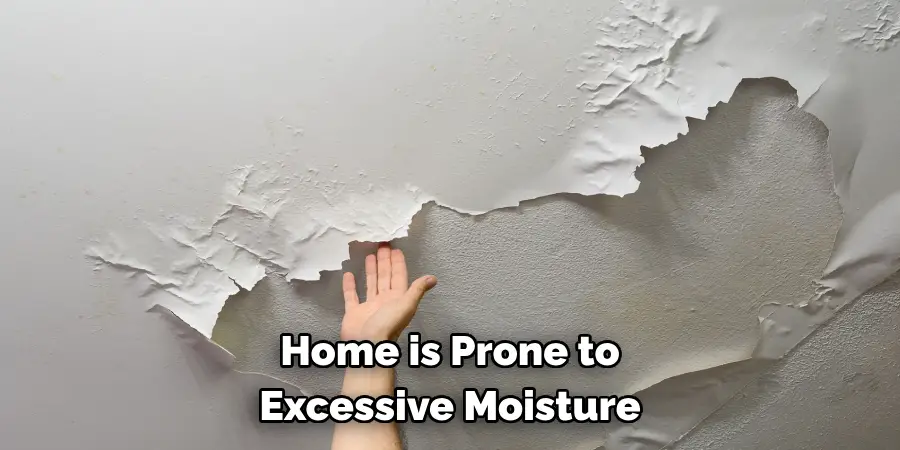
Step 6: Get Professional Help
If the problem is too large or difficult to tackle on your own, it may be best to hire a professional. A qualified mold remediation specialist can assess the situation and determine the best course of action.
Tips for How to Get Mold Out of Air
- Wear safety equipment, such as a respirator, goggles and gloves when cleaning mold.
- Always ventilate the area during the cleaning process by opening windows and doors or using fans.
- Use products specifically formulated to kill mold such as bleach or hydrogen peroxide, or hire a professional to do it for you if the problem is too severe.
- Disinfect all mold-infested surfaces with a bleach and water solution, including walls, floors, cabinets and other objects in the affected area.
- Keep the humidity levels in your home low to prevent further mold growth by using dehumidifiers and air conditioners if needed.
- Clean up any spills or leaks quickly to reduce the chance of mold growth.
- Regularly inspect your home for any signs of mold, especially in damp and dark areas such as basements and attics.
In addition to taking steps to get rid of the mold in your air, it is also important to find out what caused it in the first place. Common causes of mold growth in the air include high humidity levels, leaking pipes, inadequate ventilation and poor maintenance.
What Are Some of the Health Risks Associated With Breathing in Mold Spores?
Mold can cause a range of health problems, from mild allergic reactions to serious respiratory infections. People with asthma and other pre-existing conditions are particularly vulnerable to the effects of mold spores in the air. Common symptoms include coughing, sneezing, itchy eyes and skin irritation. In severe cases, long-term exposure to mold spores can lead to more serious respiratory issues such as severe asthma attacks, bronchitis and even lung infections. It is important to consult a doctor if you are experiencing any of these symptoms after being exposed to mold in the air.
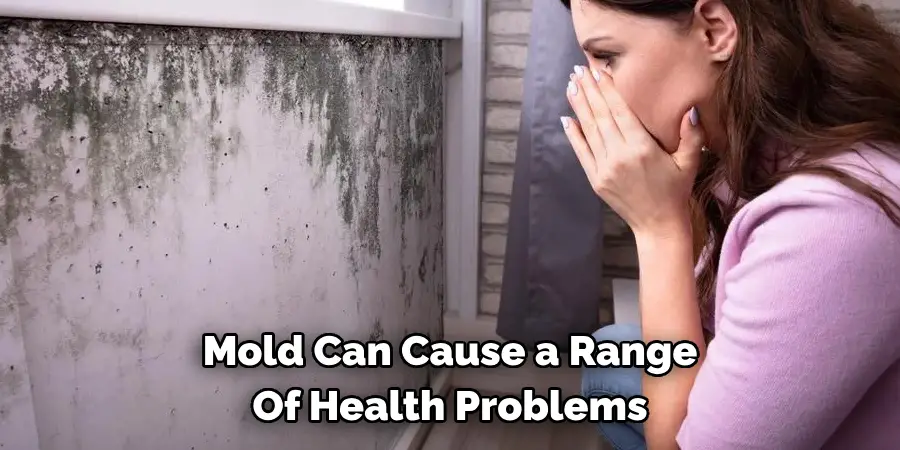
To prevent health risks associated with breathing in mold spores, it’s important to take steps to reduce or eliminate the presence of mold in your home. Use dehumidifiers and air conditioners to reduce humidity levels, regularly inspect the home for any mold growth and take steps to get rid of it quickly if found. It is also important to repair any leaking pipes or other things that can cause moisture build-up in your home as soon as possible.
What Causes Moisture Build-up That May Lead to Mold Growth?
Moisture build-up in homes is a common cause of mold growth, and can be caused by a variety of things. Poor ventilation, leaking pipes, high humidity levels due to lack of air conditioning or dehumidifiers and even activities such as cooking or showering can all contribute to moisture build-up in the home. To reduce the risk of mold growth, it is important to inspect your home for any signs of moisture build-up, such as water stains or musty odors. If found, take steps to address the issue quickly and prevent further moisture build-up.
It’s also important to maintain proper ventilation in your home by opening windows and doors regularly to allow fresh air inside. Additionally, using fans, air conditioners and dehumidifiers can help reduce humidity levels in the home and prevent mold growth. Taking these steps can go a long way towards preventing mold infestations in your home and keeping your family safe from the health risks associated with breathing in mold spores.
What Can You Do to Prevent Future Mold Growth in Your Home or Workplace?
Mold prevention is the best way to keep your home or workplace safe and healthy. To prevent mold growth, start by making sure all areas are ventilated properly and that any standing water is promptly mopped up. Additionally, you should inspect your interior walls and ceilings for visible signs of moisture buildup or dampness (e.g., water stains). If these signs are present, you should take immediate action to clean and dry them.

To further reduce the risk of mold growth, keep indoor humidity levels below 50%. You can achieve this by using a dehumidifier or by increasing ventilation with fans and windows. Be sure to clean your air conditioning unit regularly as well, since it can be a common source of mold spores. Additionally, you should avoid storing items such as paper or cardboard in damp places like basements and attics.
How Can You Keep Your Home or Office Air Clean and Mold-free?
Mold can be a major contributor to indoor air quality issues. It is important to take steps to keep your home or office free from mold buildup in order to protect the health and safety of your family, co-workers, and customers. Here are some tips for how to get mold out of the air:
- Keep humidity levels low. Mold needs moisture to grow, so it’s important to keep rooms in your home or office below 60% humidity. You can do this by using a dehumidifier and/or an efficient air conditioner.
- Clean regularly and thoroughly. Regularly clean your carpets, upholstery, furniture, floors, walls, vents, and ceilings with an appropriate cleaner for the surface material.
- Repair any water leaks or other sources of moisture quickly. If there is a leak in your home, office, or business, get it fixed right away to prevent mold from growing and spreading.
- Use air purifiers to remove mold spores from the air. Air purifiers are designed to filter and capture particles in the air that can contribute to indoor air pollution.
- Consider using an antimicrobial paint or sealant on walls and surfaces that are prone to mold growth. These products can help keep mold from growing in areas with a high risk of moisture buildup.
Taking these steps will help reduce the amount of mold in your home, office, or business and allow you to breathe easier knowing the air is safe and healthy. Additionally, you can also consider having a professional mold inspection and remediation to ensure that your air is free of mold and other contaminants.
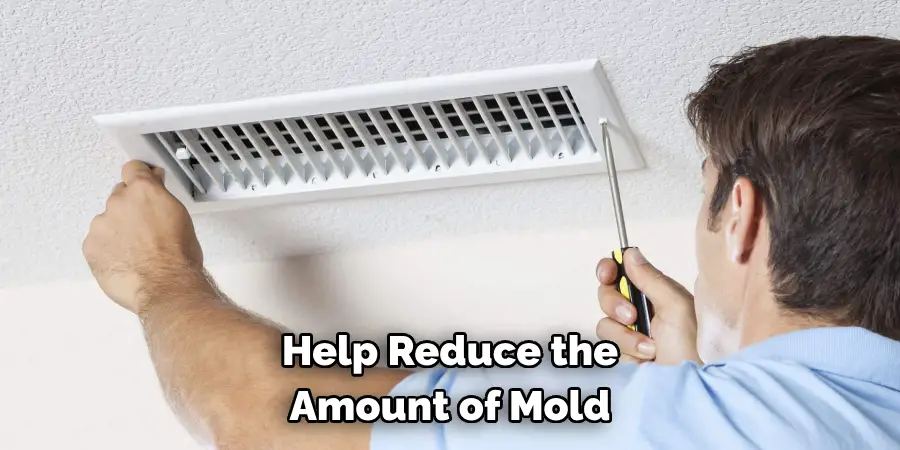
Conclusion
In conclusion, getting rid of mold in your home is an important task that should not be overlooked. While there are various methods to use, the most effective way is prevention through proper ventilation and moisture control. Additionally, it is important to address any existing mold growth promptly by cleaning surfaces with a disinfectant or bleach solution. Finally, if the problem persists, professional help may be needed for more severe infestations. I hope this article has been beneficial for learning how to get mold out of air. Make Sure the precautionary measures are followed chronologically.

